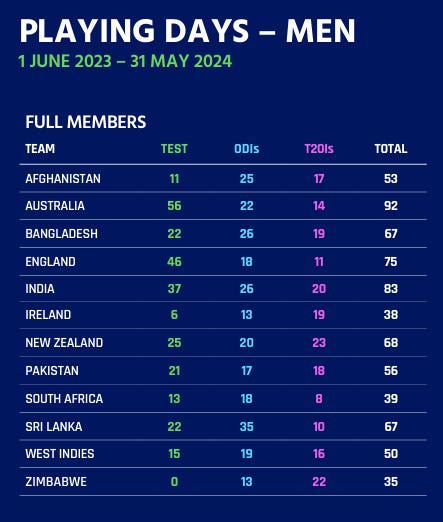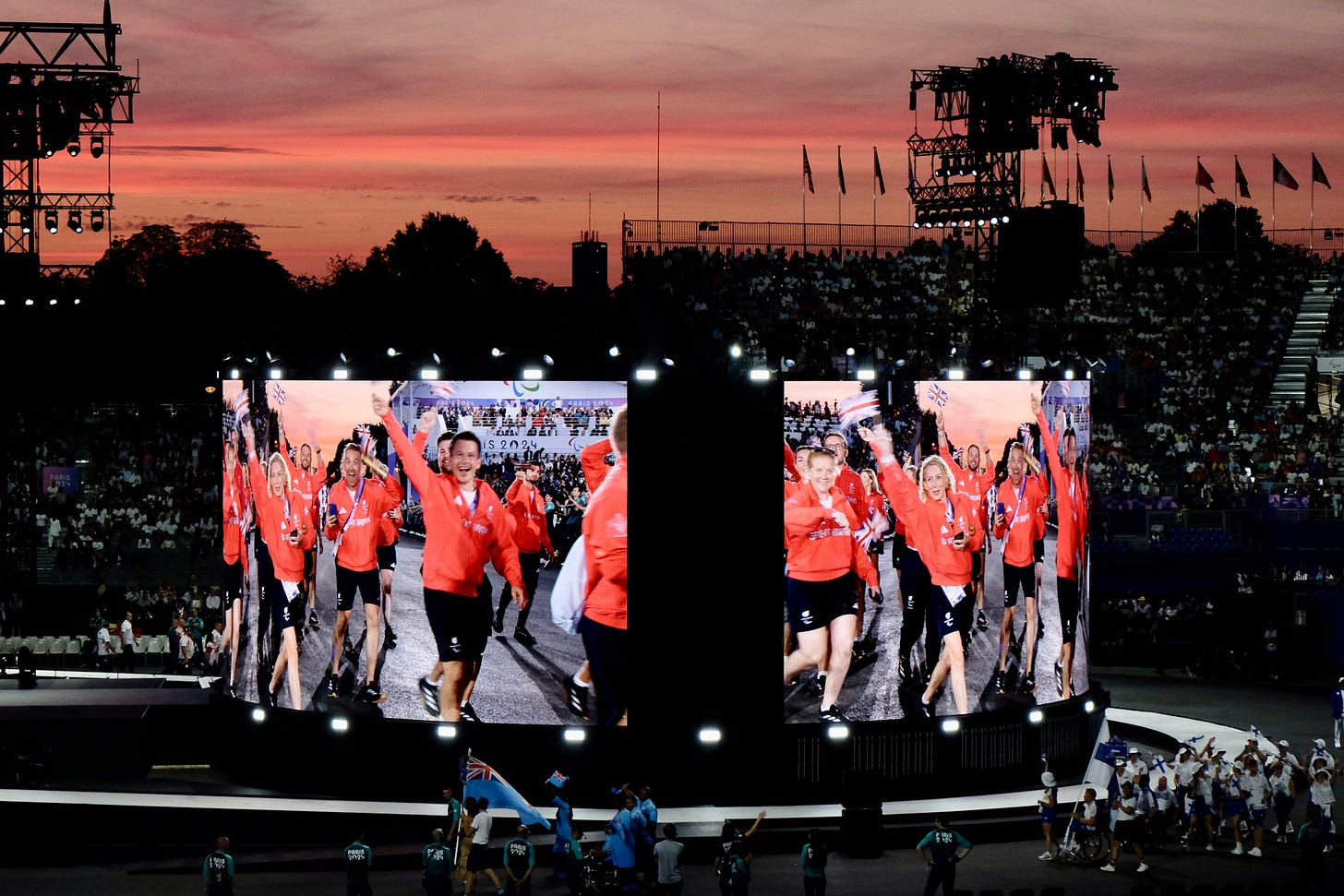You know when a broadcaster thinks it has a hit on its hands when it releases a series one episode at a time rather than in a bingeable bundle. So it is with Freddie Flintoff’s Field of Dreams On Tour, the former cricketer’s uplifting venture taking a team of youngsters from a deprived corner of his sport’s third wealthiest nation to play in the streets and parks of its richest. Appointment to view every Tuesday night.
It is fifteen years now since Flintoff last played cricket for county or country - only this month his 16 year-old son made his own first class debut for Lancashire. In the intervening years he has boxed and fought bulimia, both in full public gaze. A crash filming Top Gear has left him physically and emotionally scarred. For all he was a hero in one day international cricket, and for all these activities since retiring from the game, it is Flintoff’s starring role in the 2005 Ashes series for which he will likely always be best remembered.
Ten-over ‘gully cricket’ in the back streets of Kolkata - as played by Flintoff’s young tourists - may be a world away from the Ashes and Test cricket more generally, but the role of the long format game in creating stars and enduring memories of their feats remains critical to the health of the sport. It needs the next Flintoff, Kohli, Cummins and Stokes. After years of decline in the face of T20 franchise cricket, the three leading nations may at last be acting to shore up the Test circuit (or maybe not…).
Reports emanating from Australia in the past week suggested that the ICC, as global governing body for cricket, is introducing a $15 million fund to support the financially weaker Test-playing nations - all then bar India, England and Australia itself. This would guarantee minimum match fees for players, to help counter the lure of franchise cricket, and partially defray logistical costs when playing Tests overseas.
“We need to take away the barriers and encourage Test cricket to be the best of the best.” Mark Baird, chair of Cricket Australia
The current financial model underlying Test cricket requires nations to fund all of their overseas trips out of profits generated from ticket sales and TV broadcast fees from matches they host at home - plus whatever sponsorship dollars they can raise. Problem is that this only works if Test cricket is vibrant all over the world, which is now far from the case.
Fail to generate interest from your local populace and you are not only losing money from hosting Tests. Sending a team abroad then adds to the spreading pool of red ink disfiguring your accounts. If you want evidence of Test cricket’s crisis from England’s perspective, witness empty stands in most Tests it plays overseas and callow, undercooked opposition from the West Indies this summer. A Lord’s test done and dusted within seven sessions? Ticket refunds all round!
Although reports of the $15 million fund were stated as hard news, it transpires that this is still very much a suggestion floating around in cricket’s political ether. My first reaction on sight of the proposal was great idea, but surely not big enough to be transformative. My second, learning that it is merely a proposal, is that it could yet disappear in the financial tension between the three major cricket powers that constantly bubbles just below the sport’s surface.
The BCCI, Indian cricket’s governing body, enjoys almost $800 million revenues a year. England’s ECB generates a little over $140 million, just under half of Cricket Australia’s total.
India, of course, is cricket’s global powerhouse. Flintoff’s youngsters didn’t tour there just for the televisual culture clash. The game’s economics shifted further in India’s direction last year when it secured a 38.5% share of the ICC’s estimated $600 million net earnings over four years. England’s share is just shy of 7%; Australia’s a little lower. The slices scale down from there to a pot of just under 12% shared by the ICC’s 94 associate member nations.
The men’s teams of the three leading nations play the most days of Test cricket, as well as international cricket overall. England has the highest ratio of Test days to total days at 61%
While the less wealthy cricketing nations may see the merits of Test series, England and Australia cannot sit back and hope that opponents of competitive calibre will continue to arrive on their shores each summer. The big question is whether the movers and shakers in India value the Test format enough to deliver a truly viable financial solution for the West Indies, South Africa, New Zealand, Pakistan and Sri Lanka.
If the mooted $15 million fund becomes a reality, maybe just maybe there will be grounds for a modicum of optimism. But don’t hold your breath.
A day in the life
We’ve recently been recruiting board members for the 2026 World Team Table Tennis Championships in London. Focused very much on creating the best possible fan experience, I rounded off each interview by asking candidates what single sporting event they would most want to see that coming weekend if absolutely every one in the world was on offer.
Perhaps it was because the interviewees were all British, but I was surprised that overseas F1 races (Monaco, Miami, Las Vegas) and American sports (Super Bowl to the fore) were dominant answers. It seemed the thought of travel combined with the rarity of the opportunity and the exotica of the events won out. Plus the glitz and glamour of their presentation.
Me, I’d always choose a big night of Olympic athletics. Certainly, over-familiarity counts against domestic events, even if mainly viewed through a screen. An FA Cup final would these days only really set my pulse racing if my team was playing. A packed cricket ground is great in the moment, but days blend into each other in the memory. An epic rugby international is unforgettable, a poor one a stinker. Ditto a big fight night.
All sports are cranking up the presentation razzle dazzle to compete with each other and with alternative - and often more reliable - entertainment industries. Ultimately, though, the sport must do the talking. Which is why FI wouldn’t be top of my own list.
Let me know what your ‘if only’ choice would be.
Let the Games recommence
I’m putting the finishing touches to this edition of Sport inc. at Paris 2024’s second opening ceremony on Place de La Concorde as a guest of C4. The broadcaster will do its usual fantastic job of showcasing elite disability sport over the next 11 days.
An hour into the parade of nations and the Mexican waves had began a good ten minutes before the arrival of the Mexican athletes themselves
By the time you read this, the Paralympics will likely have already begun. I hope that back in Britain they cut through football transfer window and Test match noise. Do tune in and enjoy the Games if you’re not in the French capital yourself. I’ll report back here next Thursday.
And on the eve of the wheelchair rugby, hard to argue with a temporary indoor venue with seating built around an outdoor statue. This is Marshal Joseph Joffre (1852-1911) in the Champ de Mars Arena.







